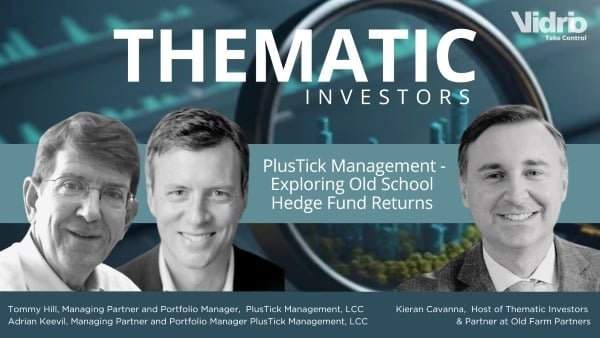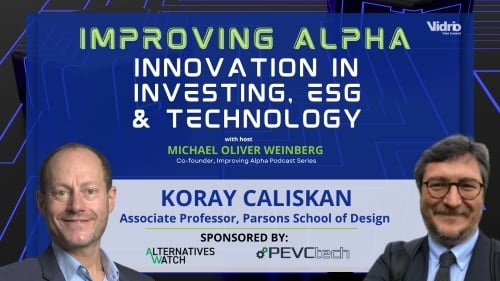Is there a shortage of liquidity in private equity transactions? What effect will tariffs have on activity when Trump assumes office? Will LPs significantly alter their portfolios, and will these changes be beneficial in light of themes like transparency and technological innovation? Answers to these questions and more are available in Vidrio's latest blog from our recent visit to SuperInvestor.
By: Nick Bourne, Commercial Director, EMEA
Institutional investors are increasingly turning to Private Market vehicles to boost their portfolio returns, and the demand is skyrocketing. A prime example that Vidrio Financial is observing is through private credit which could ultimately rival or surpass private equity in size and returns across all allocators. UBS recently published its perspectives on Private Equity’s acceleration past the traditional 60/40 portfolio. A quick snapshot provided by UBS Asset Management on that research has been included below:

Reference article: here
Given the increasing positive momentum in private market vehicles, Vidrio Financial attended a four-day educational and networking event in Monaco covering the latest insights, trends, and opportunities, better known as SuperInvestor. Dive into my reflections from the panels and networking sessions below, and don't hesitate to connect with the Vidrio team in the new year, to discover the groundbreaking data management and portfolio monitoring innovations we are working on for LPs in the alternative investment arena.
Is Liquidity Lacking?
The first presentation came from Pitchbooks’ Dylan Cox, Head of Private Markets Research. Dylan called attention to private market NAVs being sticky in comparison to current S&P 500 returns, highlighting that manager selection is very important. On average, it takes ~18 months to raise and close a private equity fund with capital flowing to either multi-manager shops or niche funds.
By 2028 private credit allocations should be close to $20 trillion in AUM, as it is already accounting for 80% of financing in leverage buyouts. As stated above, Vidro’s LP outlook on private credit remains very strong. We believe private credit allocations will continue to rise until 2026, as many allocators are still under-allocated to this alternative asset class. Regionally, the Middle East investment market is being favored by most institutional investors with fund growth up 84% in just 5 years.
Private Equity Perspectives:
As a leading alternative service provider, Vidrio is constantly hearing from clients on their concerns about geopolitical risks, interest rates, and the future of private equity. To compare this against other thought leaders at this event we attended the session on Private Equity into 2025: putting the macro into perspective panel featuring Charlotte Dunley, Director, Asante Capital, Michael Bruun, Global Co-Head of Private Equity, and Jordon Kruse, Co-Portfolio Manager, Special Situations, Oaktree Capital Management.
Several of the panelists immediately focused on the Trump re-election (although votes were still being tallied at the time of this event) and what that means for the markets post-January. Scenarios included:
- Increased volatility as US debt will continue to explode.
- Trade tariffs will rise.
- US will diverge further from Europe and China, especially considering Trump's prospective China policy, leaving allocators to avoid or lessen the impact to regional allocations.
More broadly, private equity investors will try to avoid political risk and find secular growth trends to capitalize on for dealmaking. Many investors are pointing to industrials, consumer, financial services, energy, especially where AI can help margins. The panel agreed that European assets are largely undervalued and dealmaking can still be done in this region.
They’re closely monitoring distributed to paid-in capital (DPI) or the realization multiple to understand how successful a fund manager is at returning capital to their investors. Panelists believed this metric is more important than multiple on invested capital, (MOIC) as the timing of capital calls or distributions is not considered, and NAVs are largely ignored outside of the valuation date. A great resource for where some GPs are investing today is the Thematic Investors podcast which is powered by Vidrio and discusses several sectors that GPS are actively researching today.
Middle Market Opinions and LP Strategies:
At the SuperInvestor event, I had the privilege of attending two insightful panels that delved into the compelling reasons why the middle market is an ideal playground for LPs, and explored the broader trends shaping LP portfolio strategies for 2025 and beyond. Dana Haimoff – MD & Portfolio Manager, JP Morgan Asset Management, David de Villiers – Managing Director, Wilshire, Merrick McKay – Head of Private Equity, Patria, and Imogen Richards – Partner & Head of European Primaries, Pantheon formed the panel entitled The Benefits of the Mid-market: Time for the Middle Child to Shine.
A lot of the discussion focused on the relationship between LP and GP, and how it may evolve as we move forward in the new year. For fund selection and working with GPs in general, panelists wanted the following:
1. Hands on, operational experience. A major red flag would be a lack of bandwidth in answering questions, so importance is placed on the size of the team and the resources necessary to do the job.
2. High degree of relationship building. It’s a people business so if you’re not having open conversations, it can impact deal-making and decision-making abilities.
3. First-time managers aren’t an issue, but they should have a track record of deal-making along with exits. Options to ease the transition may include becoming a cornerstone investor in a fund or coinvesting alongside the blind pool until a level of comfort is built with the GP.
Joe Topley – CEO, GBL Capital, Michael Lindmauer – Managing Director, Global Head of Private Equity, Allianz Capital Partners, and Antony Anastasiadis – Managing Director, Secondary Investments, Hamilton Lane joined the stage to take us through the top priorities that LPs have on their minds for portfolio construction in 2025.
Panelists agreed that private equity returns have been going through a period of normalization with unrealized NAVs around 23%, (back in 2023 this was under 10%). They’ve also noticed that many LPs are becoming more sophisticated around the risks of the market and understand the use of continuation funds to a degree, still GPs need to get better at managing their funds with regards to exits, distributions, and performance. Being a great dealmaker isn’t good enough on it’s own.
In today's dynamic market, continuation funds are becoming a common strategy, appearing in roughly 10% of exits. However, they should be a last resort after all other exit avenues have been thoroughly explored and deemed unsuitable. Allianz Capital Partners would prefer to sell rather than opt for a continuation vehicle, and then use the proceeds to reup to another fund. Another point of concern that the panelists observed was that GPs tend to hold on to the businesses a bit too long to squeeze up the multiples. Panelists believed that could be alleviated if more compensation incentives were applied to these funds.
Pioneers of Innovation:
Vidrio was formed and battle tested by institutional market practitioners for those same allocators across hedge funds, liquid alternatives, and private market funds. In the panel, The Dichotomy of the Emerging Manager, I was introduced to Simon von Oppenheim – Director of European Investor Relations, 747 Group, Marc de Kloe – Partner, Risk Management & Compliance, Theta Capital Partners, Cem Meric – Partner, LGT Capital Partners, and Borja Fernandez Tamayo – Vice President, Unigestion. They focused on emerging managers and their ability to combine innovation with an LPs need for alpha and risk mitigation strategies.
In the panelist’s opinion, emerging managers have outperformed the markets in specialized sectors with strong tailwinds. They did concede that longer due diligence processes with expanded references are an absolute must. LGT Capital Partners mentioned their use of intermediaries to get introductions to new fund managers. Filtering out the data noise in private equity investing is essential. Theta Capital Partners looks for ways to streamline that noise cancellation by leveraging data scientists and mapping transactions.
Emerging manager conversations quickly shifted to a comparison view on Europe versus the United States. This session featured insights from Mrinalini Lhila – Founder & Managing Principal, 360 Capital, Tim Chow – Director, Primaries Europe, Capital Dynamics, Kee Rabb – Managing Director, Private Equity, Apogem Capital, Farhan Lalji – Founder, General Partner, LTV Capital, and Greg Walker – Managing Director, Muller & Munroe. Panelists believed that the European system is more mature and has better development procedures and practices in place. In comparison, the US system is much more sophisticated and allows for quicker investments. A recurring theme in both the previous panel and this one is the necessity for increased scrutiny, references, track record attribution, and more thorough due diligence when evaluating emerging managers. The longer teams have collaborated, the better, as it ensures alignment on:
- Strategy - does deal sourcing make sense to all parties?
- Execution - has the track record been luck or is is repeatable?
- Alignment - does the investment team have skin in the game, (i.e., is carried interest spread across the firm?).
Muller & Monroe added that a review should occur on a regular cadence to avoid the losers and back the winning funds across the portfolio. Most importantly is to provide feedback when a manager isn’t selected to help them in upskilling.
A look at climate investment and private wealth:
A discussion on climate investments, their demand and growth, and the opportunities moving into 2025 was up next. This panel was led by Nicolas Muller – Head of Private Equity Partnerships, Blue Earth Capital, and featured additional insight from Yalin Karadogan – Partner, Leapfrog Investments, Chuck Templeton – Managing Partner, S2G Ventures, Seva Zakharov – Investment Director, Vertevis Capital Partners. Panelists agreed that more talent and capital is moving into these sectors due to increasing returns.
Leapfrog Investments pointed to the advances in cleaner battery technology and how energy transition efforts could be the next industrial revolution. Tracking is still a point for debate as according to Vertevis Capital Partners many managers create their criteria for measuring impact with the KPIs linked to the value they are carrying in the fund. This doesn’t always lead to the most transparent KPIs and can lead to greater questions by LPs looking to get into the space.
Vidro’s ESG reporting and analytical capabilities are constructed around the underlying securities as well as the managers. We also provide fully customizable scoring templates for our clients which can be integrated into any ESG data provider to capture both qualitative and quantitative data inputs. Common examples that our monitoring teams come across include greenhouse gas emissions, energy use, sustainability strategy, goals, and other themes.
From the discussion tracks on ESG, we then jumped over to a couple of sessions in private wealth to see what institutional players can expect from family offices, HNW individuals, and other market participants. For the session titled, Private Wealth: The Next Frontier for Private Markets featuring Marcus Storr – Head of Alternative Investments, FERI, Alessandra Puglisi – Investment Director Private Markets, UBS, and Julia Khandoshko – CEO Mind Money, the goal was to investigate how allocator models were approaching private market asset allocation, the platforms involved, and the market opportunity.
Through the panelists’ interactions with family offices and UHNW individuals, many reported that liquidity is the main talking point with many clients being significantly risk-adverse. These sophisticated investors are looking to private markets for greater returns but they need guidance so they can improve their investment knowledge. Panelists believed that the 2-3% in alternative investments that we’re seeing in portfolios will increase with many looking to secondaries as a good entry point for wealth investors. This backs a William Blair study from earlier in the year where secondaries in 2024 remained resilient over the prior review period due to strong fundraising, liquidity needs, and more investor solutions for this asset vehicle. More can be seen here in the report.
Q: At this point in the SuperInvestor event, I asked the question on what level of transparency are each of your clients demanding for their portfolios?
No surprise, and in direct correlation with what Vidrio is seeing across global regions, is that the answers were in favor of more transparency. Panelists stated that they do a good job educating their clients on how to read performance, valuations, leverage, etc., however they’re investing a lot of time and capital to collect the data. One panelist stated that they have five internal programmers building their own system for private market risk to navigate over 300 private market funds. Even through this internal development project they’re getting just over 60% of the data through students saving the documents to a dedicated server and python code running the extraction.
Not the most efficient way to increase data transparency. The bottom line is that clients won’t eat what they don’t understand.
The final panel of my journey to SuperInvestor was entitled Collaborating with Private Wealth, which was moderated by Conrad Tsang – Founder & Chairman, Strategic Year Holdings Ltd, and featured insight from Jean-Francois Le Ruyet – Senior Advsory Partner, Quilvest Capital Partners and Sean Low – CEO & CIO, Golden Vision Capital (Singapore) Pte Ltd. The opinion from this panel was that family offices tend to repeat investment cycles and invest in industries that they are most comfortable in today. Diversification is critical and they have a high affinity towards co-investments. Golden Vision Capital mentioned the importance of always being two phone calls away from management, this allows them better access to data and transparency. Investors are also considering venture capital, as it generally has extended J-curves and is viewed in the region as less risky.
The time spent at SuperInvestor was truly valuable through both session and networking discussions around data transparency, emerging managers, middle market strategies, and liquidity. If you’re an institutional investor looking to understand how Vidrio can integrate with your investment operations across private market vehicles please reach out today.
Book a meeting with Nick today to experience a complimentary walkthrough of Vidrio’s latest platform. Vidrio supports Private Equity allocators by helping them take control of their alternative investment data, streamlining portfolio monitoring controls, tracking complex private equity investment structures across semi-liquid funds, secondaries, evergreen funds, and special purpose vehicles.







